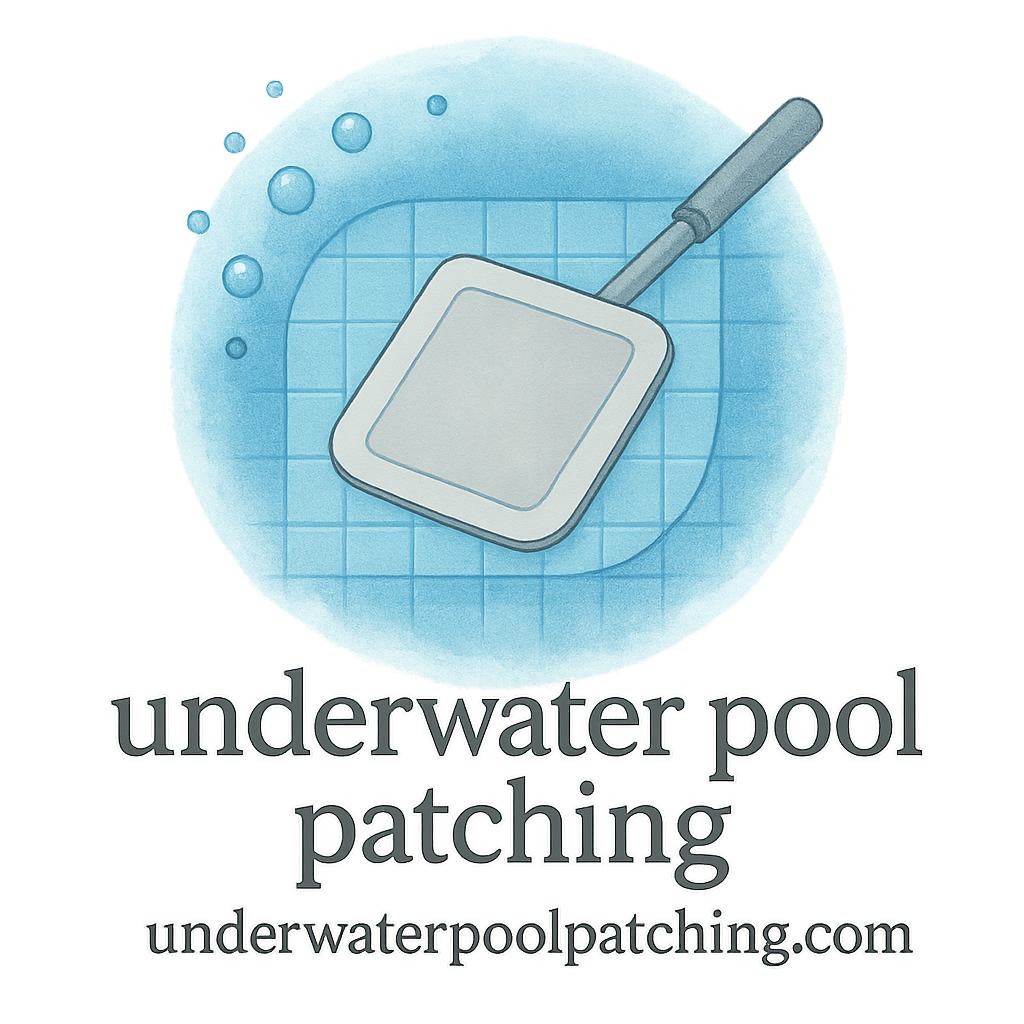If you’ve ever patched a pool wall underwater, you know the struggle is real when it comes to getting that final seam perfectly smoothed. It’s not just about slapping on a patch—smoothing the seams makes the difference between a patch that holds for years and one that peels in weeks.
In this guide, we’re diving deep (pun intended!) into the 7 tools to smooth patch seams in underwater pool walls and how they help your patching job last longer, look cleaner, and save you serious money in the long run.
Why Seam Smoothing Is Crucial in Underwater Pool Patching
Have you ever seen a patch peel off just weeks after applying it? One major culprit is poorly smoothed seams. Seam smoothing helps lock the edges of your patch into place, prevents water pressure from loosening them, and maintains that polished pool-wall finish.
Smoothing is the final step—but it’s arguably the most important.
Understanding Patch Seams in Pool Walls
What Are Patch Seams?
Patch seams are the visible (and physical) lines where your repair material meets the existing pool surface. They’re the “edges” of your patch job—and they can make or break the repair.
How Improper Smoothing Affects Pool Repairs
Poorly smoothed seams are like speed bumps in your repair job. They can:
- Create water resistance that pulls the patch away
- Trap air bubbles or debris
- Lead to early deterioration of patch materials
Using the right tools can prevent these issues and extend the lifespan of your repair. For details on choosing proper materials, check Patch Types & Materials.
Choosing the Right Smoothing Tools
Key Factors to Consider
When picking a smoothing tool, consider:
- The type of patch material (vinyl, epoxy, rubber, etc.)
- The curvature of your pool wall
- How deep underwater you’ll be working
Tool Compatibility with Patch Materials
Certain tools work better with specific materials. For example, an epoxy seam roller is perfect for epoxy-based patches. If you’re not sure what kind of patch you’re dealing with, check out our guide on Repair Techniques.
Tool #1: Rubber Smoothing Trowel
Why It’s a Pool Pro’s Favorite
The rubber trowel is flexible yet firm enough to apply steady pressure across seams without disturbing the surrounding area. It’s perfect for:
- Pliable patches
- Curved walls
- Gentle smoothing
Plus, its non-abrasive surface prevents scratching vinyl liners—score!
You can also learn how to pair this tool with proper inspection techniques via Inspection & Diagnosis.
Tool #2: Underwater Putty Knife
Flexibility Meets Function
This isn’t your average kitchen tool. A putty knife designed for underwater use is rust-resistant, slightly flexible, and ideal for pressing down edges and smoothing out uneven surfaces.
It’s especially useful for patching in awkward corners—where your hands can’t fit but seams still need finishing.
For more savings tips with DIY repairs, check our Cost Budgeting guide.
Tool #3: Epoxy Seam Roller
Ideal for Epoxy-Based Patches
Rolling the edges flat is critical when you’re working with epoxy. This tool applies consistent pressure and ensures your patch bonds firmly with the surface.
Epoxy repairs can be expensive—maximize their lifespan with epoxy tag strategies.

Tool #4: Silicone Edge Blade
Precision Smoothing for Clean Edges
Think of this as the precision artist’s tool. The silicone edge blade is perfect for those finishing touches that make a patch look professionally done.
Silicone is soft enough to avoid damage but firm enough to create a clean line—essential for sealing out water.
Tool #5: Underwater Orbital Buffer
Powered Smoothing with a Polish Finish
This tool is for those who want the ultimate smooth finish. It’s battery-powered and works wonders on larger patches or high-traffic areas like steps or ledges.
Looking for a long-term fix? Match your orbital buffer with a maintenance plan to reduce future repair needs.
Tool #6: Seam Smoothing Sponge
Gentle Pressure, Seamless Results
Don’t underestimate the humble sponge. Designed specifically for underwater smoothing, this sponge is perfect for soft patches like vinyl or rubber. It gently molds the seam while avoiding overpressure that can lift the patch.
It’s the go-to tool for quick DIY fixes, and it’s highly recommended in many patch repair guides.
Tool #7: Multi-Angle Seam Finisher
The Versatile Tool Every Pool Owner Needs
This multi-angle tool adjusts to the curve of the pool wall, allowing you to smooth seams at any angle—horizontal, vertical, or even inverted.
For anyone serious about patch longevity and seamless repairs, this is a must-have. You’ll find it mentioned frequently in patching techniques and pro toolkits.
Pro Tips for Flawless Seam Finishing
Timing is Everything
Always smooth the seams before the patch fully cures. Wait too long, and it becomes rigid and difficult to mold. Too early, and it may slip or distort.
Watch for Bubbling and Air Gaps
Use your sponge or silicone blade to press out bubbles. They may seem small, but they’re the #1 reason patches fail early—especially around seams.
Check out our full leak detection resources to make sure you aren’t missing deeper issues.
Preventing Future Seam Damage
Routine Maintenance and Inspections
Regular checkups are the easiest way to spot worn seams or patch issues early. Schedule a monthly inspection—especially during heavy pool usage seasons.
Don’t forget to check out our tools for routine checks and prevention.
Use Quality Materials Every Time
Your tools are only as good as the patches you apply. Use certified patch kits and stay updated with current material guides like those found under the materials tag.
Conclusion
Smoothing seams in your underwater pool wall repairs isn’t just a finishing touch—it’s a make-or-break step that determines the longevity and effectiveness of your patch. With these 7 tools to smooth patch seams in underwater pool walls, you’ll be fully equipped to handle any repair like a pro.
From trowels to orbital buffers, each tool plays a unique role. Combine them with the right materials, proper timing, and a little know-how, and you’re on your way to crystal-clear waters and worry-free swim sessions.
And if you want to keep those patches looking perfect, be sure to follow a solid maintenance plan and budget smartly with our expert advice on cost-saving techniques.
FAQs
1. Can I smooth patch seams without tools?
You can try using your hand, but it won’t be as effective. Tools apply even pressure and help the patch bond better.
2. What’s the most important tool for smoothing seams?
If we had to pick one, the rubber trowel is a great all-around option for most materials and surfaces.
3. How long should I wait before smoothing a patch?
Start smoothing immediately after applying the patch, before it starts curing—usually within the first 2–5 minutes.
4. Is it safe to use powered tools underwater?
Yes, but make sure they’re rated for underwater use. Check manufacturer specs and safety standards before use.
5. How can I tell if my patch seams are smoothed correctly?
Run your fingers over the patch. If it feels flush with the surface and no bubbles are visible, you’re good.
6. How do I keep patch seams smooth over time?
Perform regular inspections, follow a maintenance plan, and re-smooth if you notice lifting.
7. Where can I find more patching tools and tips?
Visit UnderwaterPoolPatching.com for more expert tips, tools, and techniques.


